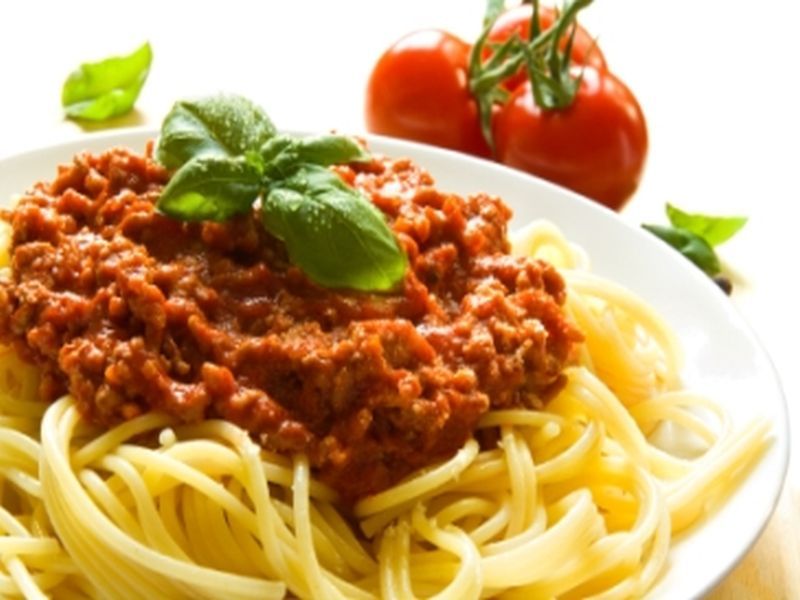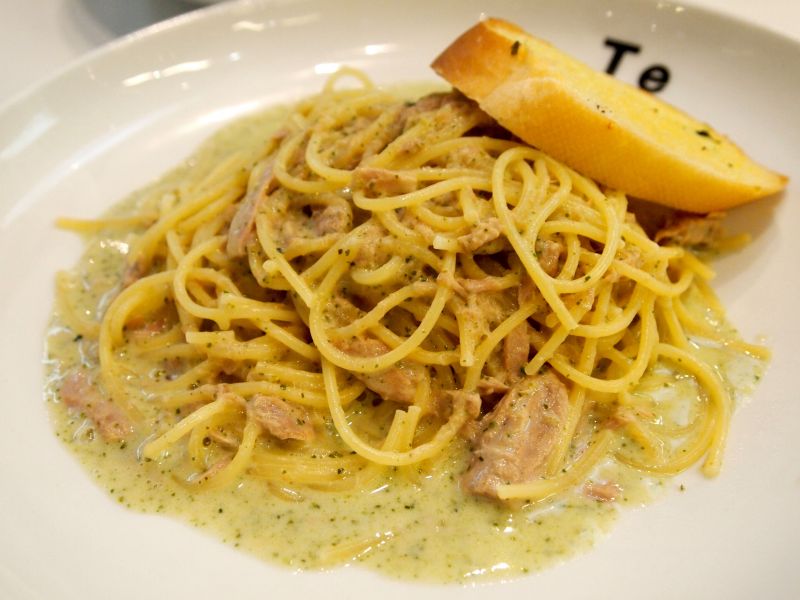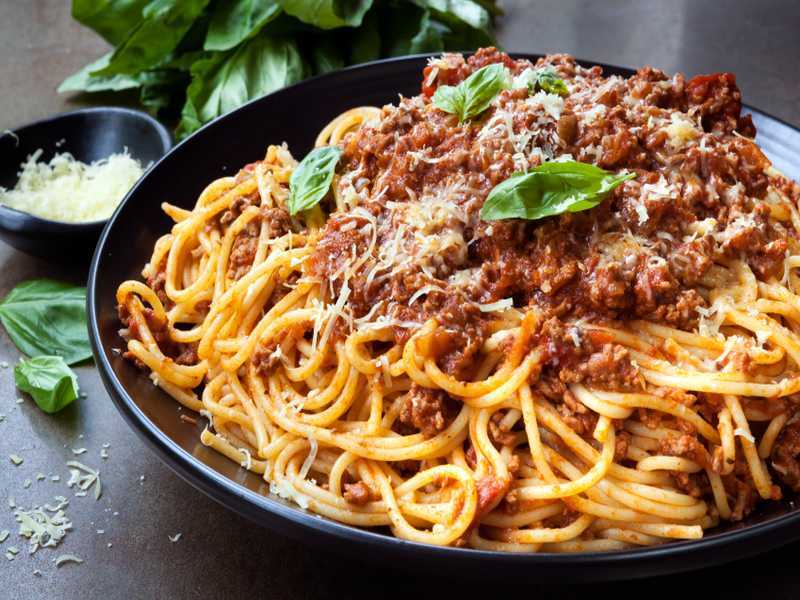Sauce is a crucial element when it comes to enjoying a delicious plate of spaghetti. There are various types of sauces available that can elevate the taste and add depth to the dish. In this summary, we’ll explore some popular types of spaghetti sauces and provide an overview of their ingredients, cooking methods, and unique characteristics.
1. Classic Marinara Sauce:
Marinara sauce is a staple in Italian cuisine and offers a traditional flavor profile. It is made using tomatoes, garlic, onions, herbs like oregano and basil, and sometimes a touch of chili flakes. The sauce is simmered for a sufficient period to allow the flavors to meld together. Marinara sauce can be customized with the addition of ingredients such as olives, capers, or anchovies to enhance the taste.
2. Carbonara Sauce:
Carbonara sauce is a rich and creamy option for those who enjoy a decadent spaghetti dish. This sauce is traditionally made using eggs, grated Parmesan or Pecorino cheese, pancetta or bacon, and black pepper. The eggs, cheese, and pancetta are gently cooked together until it forms a velvety sauce that coats the pasta strands. Carbonara sauce is known for its luxurious taste and smooth texture.
3. Alfredo Sauce:
Originating from Italy, Alfredo sauce is another creamy option that is adored worldwide for its indulgent flavors. This sauce is made by combining butter, heavy cream, Parmesan cheese, and minced garlic. The ingredients are simmered until the sauce thickens and coats the pasta evenly. Alfredo sauce is versatile and can be enhanced with the addition of ingredients such as smoked salmon, mushrooms, or grilled chicken.
4. Bolognese Sauce:
Bolognese sauce is a hearty and meaty option that typically consists of ground beef or a combination of beef and pork. It is simmered with onions, carrots, celery, garlic, tomato paste, diced tomatoes, herbs, and red wine for an extended period to develop its rich flavor. Bolognese sauce is known for its thick consistency, robust taste, and its ability to adhere well to the pasta.
5. Pesto Sauce:
Pesto sauce is a vibrant and fresh option that originated in Genoa, Italy. It is made by blending fresh basil leaves, garlic, pine nuts, Parmesan or Pecorino cheese, and olive oil. The resulting sauce is pesto, which is characterized by its fragrant aroma and rich green color. Pesto sauce can be used as a condiment by tossing it with cooked spaghetti or as a base by diluting it with pasta cooking water.

6. Aglio e Olio Sauce:
Aglio e Olio, meaning “garlic and oil,” is a simple yet flavorful sauce that is easy to prepare. The sauce is made by heating olive oil and sautéing minced garlic until it becomes fragrant. Chili flakes can also be added for some heat. The cooked pasta is then tossed in this sauce, ensuring that it is well coated with the garlic-infused oil. Aglio e Olio sauce is ideal for those who appreciate the simplicity of flavors.
7. Puttanesca Sauce:
Puttanesca sauce is a bold and robust option that originated in Naples, Italy. It consists of tomatoes, garlic, onions, olives, capers, anchovies, and chili flakes. The combination of these ingredients creates a sauce that is briny, spicy, and immensely flavorful. Puttanesca sauce is known for its vibrant taste, making it an excellent choice for those who enjoy intense flavors.
8. Arrabbiata Sauce:
Arrabbiata, meaning “angry” in Italian, is a fiery sauce that combines tomatoes, garlic, onions, chili flakes, and olive oil. The chili flakes provide a significant amount of heat, giving the sauce its characteristic spiciness. Arrabbiata sauce is a popular choice for those who prefer their spaghetti with a kick.
9. Vodka Sauce:
Vodka sauce is a creamy and slightly sweet option that adds a unique twist to traditional spaghetti. It consists of tomatoes, heavy cream, vodka, onions, garlic, and sometimes the addition of grated Parmesan or Pecorino cheese. The vodka in the sauce enhances the flavors of the other ingredients, resulting in a delightful taste. Vodka sauce is known for its smooth and velvety texture.
In conclusion, the world of spaghetti sauce is diverse and enticing. Whether you prefer a classic marinara, a creamy Carbonara, or a fiery Arrabbiata, there is a sauce to suit every taste. With the right combination of ingredients and cooking techniques, you can create a delicious spaghetti dish that is sure to satisfy even the most discerning palate.Types of Sauce for Spaghetti: Elevating Flavors and Delighting Palates
Introduction
When it comes to enjoying a plate of spaghetti, the sauce plays a crucial role in adding depth and flavor to the dish. With a variety of options available, each sauce brings a unique taste profile that can elevate your spaghetti experience. In this article, we will explore ten different types of spaghetti sauces, their ingredients, cooking methods, and their potential application in the culinary industry. Whether you are a home cook looking to experiment in the kitchen or a professional chef seeking inspiration for your restaurant menu, these sauces offer a wide range of possibilities.
1. Classic Marinara Sauce: A Staple of Italian Cuisine
Marinara sauce is a classic favorite that has been enjoyed for generations. Its simple yet flavorful composition makes it a versatile option for various pasta dishes. The base of this sauce typically consists of tomatoes, garlic, onions, herbs such as oregano and basil, and sometimes a touch of chili flakes for a hint of spiciness. The sauce is simmered slowly to allow the flavors to meld together and develop a rich taste. Marinara sauce can be customized by adding ingredients like olives, capers, or anchovies to create variations that cater to specific preferences.

Business Application: Marinara sauce is a staple in Italian restaurants and pizzerias. Its popularity offers an opportunity for businesses to create signature dishes featuring this classic sauce. By experimenting with different ingredients and flavor profiles, restaurants can offer unique spins on traditional marinara sauce dishes, attracting customers seeking new culinary experiences.
2. Carbonara Sauce: Creamy Indulgence Meets Unparalleled Flavor
Carbonara sauce is a rich and creamy option for those who enjoy a decadent spaghetti dish. This Italian classic typically consists of eggs, grated Parmesan or Pecorino cheese, pancetta or bacon, and black pepper. The sauce is created by gently cooking the eggs, cheese, and pancetta together until they form a velvety sauce that coats the pasta strands. Carbonara sauce delivers luxurious flavors and a smooth texture, making it a favorite among pasta lovers.
Business Application: Carbonara sauce presents opportunities for businesses to offer indulgent and luxurious spaghetti dishes. Restaurants can create unique variations of Carbonara by incorporating quality ingredients such as high-end cheeses, artisanal bacon, or even adding a touch of truffles. This allows establishments to offer a premium dining experience and attract customers seeking sophisticated and flavorful pasta dishes.
3. Alfredo Sauce: Creamy Elegance with Endless Possibilities
Originating in Italy, Alfredo sauce is renowned worldwide for its creamy and indulgent flavors. The traditional recipe combines butter, heavy cream, Parmesan cheese, and minced garlic. These ingredients are simmered until the sauce thickens and coats the pasta evenly. Alfredo sauce serves as an excellent base upon which to build a variety of creative dishes. It can be enhanced with ingredients such as smoked salmon, mushrooms, or grilled chicken, providing endless possibilities for culinary exploration.
Business Application: Alfredo sauce is a versatile option that allows businesses to cater to a wide range of customer preferences. Restaurants can showcase their creativity by offering unique variations, such as substituting traditional ingredients with vegan alternatives or incorporating local and seasonal produce. This flexibility enables establishments to cater to a diverse customer base and capitalize on the popularity of this beloved sauce.
4. Bolognese Sauce: Hearty and Flavorful Comfort Food
Bolognese sauce is a hearty and meaty option that is beloved by spaghetti enthusiasts. Typically made with ground beef or a combination of beef and pork, this sauce is simmered with onions, carrots, celery, garlic, tomato paste, diced tomatoes, herbs, and red wine. The extended cooking time allows the sauce to develop a rich flavor and thick consistency that adheres well to the pasta. Bolognese sauce is known for its robust taste and ability to evoke a sense of comfort and nostalgia.
Business Application: Bolognese sauce is a popular choice for restaurants, delis, and food establishments seeking to offer comforting and satisfying dishes. Businesses can use this sauce as a base for various menu items, such as pasta bakes, lasagnas, or even as a filling for stuffed pasta. Capitalizing on the nostalgic appeal of Bolognese sauce can attract customers seeking familiar flavors and meals reminiscent of home cooking.
5. Pesto Sauce: A Vibrant Burst of Freshness
Pesto sauce originated in Genoa, Italy and is famous for its vibrant and fresh taste. The sauce is made by blending together fresh basil leaves, garlic, pine nuts, Parmesan or Pecorino cheese, and olive oil. The resulting pesto sauce is characterized by its fragrant aroma and rich green color. It can be used as a condiment by simply tossing it with cooked spaghetti or as a base by diluting it with pasta cooking water. Pesto sauce offers a refreshing change of pace from the traditional red sauces.
Business Application: Pesto sauce presents an opportunity for businesses to offer a taste of freshness and elevate their pasta offerings. Restaurants can incorporate pesto sauce into a wide range of dishes, such as salads, sandwiches, or even as a topping for pizza. By highlighting fresh and local ingredients, establishments can attract health-conscious customers seeking lighter and vibrant options.

6. Aglio e Olio Sauce: Simplicity at Its Finest
Aglio e Olio, meaning “garlic and oil” in Italian, is a simple yet flavorful sauce that is easy to prepare. The sauce consists of olive oil and minced garlic, which are sautéed until the garlic becomes fragrant. Some variations may also include chili flakes for a hint of heat. The cooked pasta is then tossed in this sauce, ensuring that each strand is well coated with the garlic-infused oil. Aglio e Olio sauce is ideal for those who appreciate the beauty in simplicity.
Business Application: Aglio e Olio sauce can be a great addition to a restaurant’s menu, especially for those looking to offer a quick and easy yet flavorful pasta option. This sauce appeals to customers seeking dishes that are simple and comforting. By highlighting the quality and flavor of the olive oil and garlic, businesses can create a dish that stands out through its understated elegance.
7. Puttanesca Sauce: Bold and Briny
Puttanesca sauce is a bold and robust option for those who enjoy intense flavors. Hailing from Naples, Italy, this sauce combines tomatoes, garlic, onions, olives, capers, and anchovies. Chili flakes are often added for a touch of spiciness. The combination of these ingredients creates a sauce that exhibits a complex interplay between salty, tangy, and briny flavors. Puttanesca sauce is known for its vibrant taste, making it an excellent choice for those seeking a flavor-packed pasta experience.
Business Application: Puttanesca sauce can add a unique offering to a restaurant’s menu, particularly for establishments that focus on bold and adventurous flavors. By experimenting with different types of olives, capers, and anchovies, businesses can create variations of the sauce that cater to specific palates. Attracting customers who appreciate robust and tangy tastes can lead to increased customer satisfaction and loyalty.
8. Arrabbiata Sauce: A Fiery Kick
Arrabbiata sauce, meaning “angry” in Italian, is a fiery option that is perfect for those who enjoy a bit of spice in their spaghetti. The sauce is made by combining tomatoes, garlic, onions, chili flakes, and olive oil. The chili flakes provide a significant amount of heat, giving Arrabbiata sauce its characteristic spiciness. The bold flavors and moderate heat make it an excellent choice for those seeking a zesty pasta experience.
Business Application: Arrabbiata sauce can add excitement and diversity to a restaurant’s menu. Businesses can attract spicy food enthusiasts by incorporating this sauce into pasta dishes or using it to create unique appetizers or pasta accompaniments. Highlighting the heat of the chili flakes and the robustness of the other ingredients can create a memorable dining experience and encourage customers to try something new.
9. Vodka Sauce: A Sweet and Creamy Twist
Vodka sauce offers a unique twist on traditional spaghetti flavors. Combining tomatoes, heavy cream, onions, garlic, and sometimes grated Parmesan or Pecorino cheese, this sauce delivers a creamy and slightly sweet taste profile. The addition of vodka enhances the flavors of the other ingredients, resulting in a delightful balance. Vodka sauce is known for its smooth and velvety texture, lending an elegant touch to pasta dishes.
Business Application: Vodka sauce provides an opportunity for businesses to offer a sophisticated and luxurious dining experience. This sauce can be used as a base for pasta dishes or as a component of signature sauces or dressings. The versatility of vodka sauce allows restaurants to experiment with different ingredients, such as mushrooms or seafood, enticing customers with unique flavor combinations.
Conclusion

When it comes to enjoying a plate of spaghetti, the right sauce can make all the difference. From classic marinara to creamy Carbonara, and fiery Arrabbiata to indulgent Alfredo, the world of spaghetti sauces offers a multitude of flavors and options. Each sauce brings its own unique characteristics to the table, allowing businesses to showcase their creativity and cater to different customer preferences. Whether you’re seeking traditional Italian favorites or innovative twists on classic recipes, the variety of spaghetti sauces ensures there is a sauce for every palate. By embracing these diverse options, businesses can elevate their culinary offerings and attract customers seeking a memorable and satisfying spaghetti experience.









